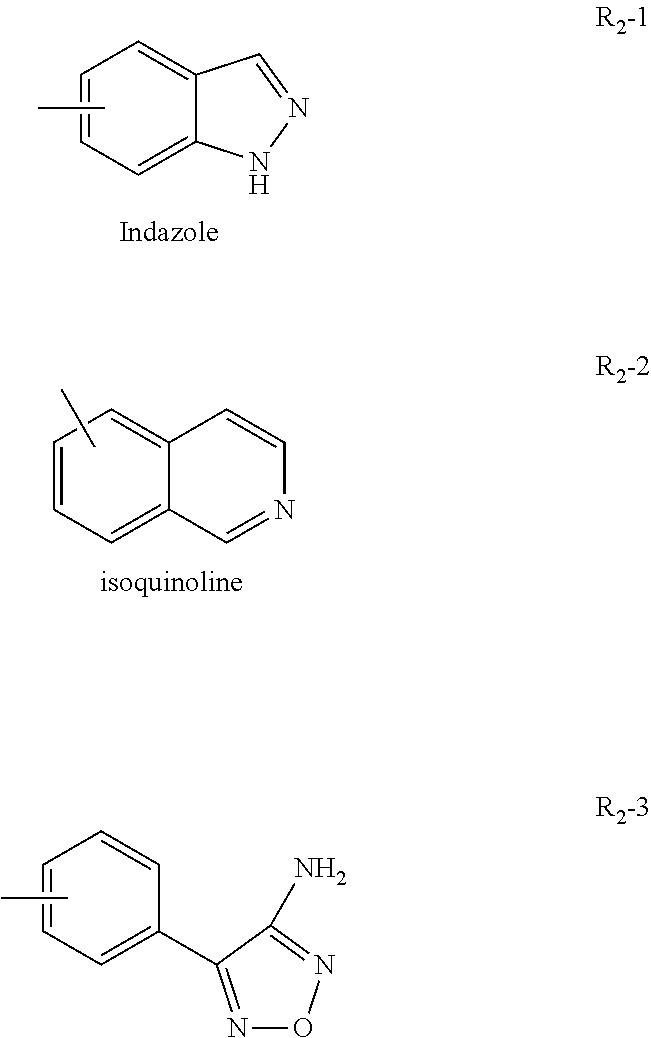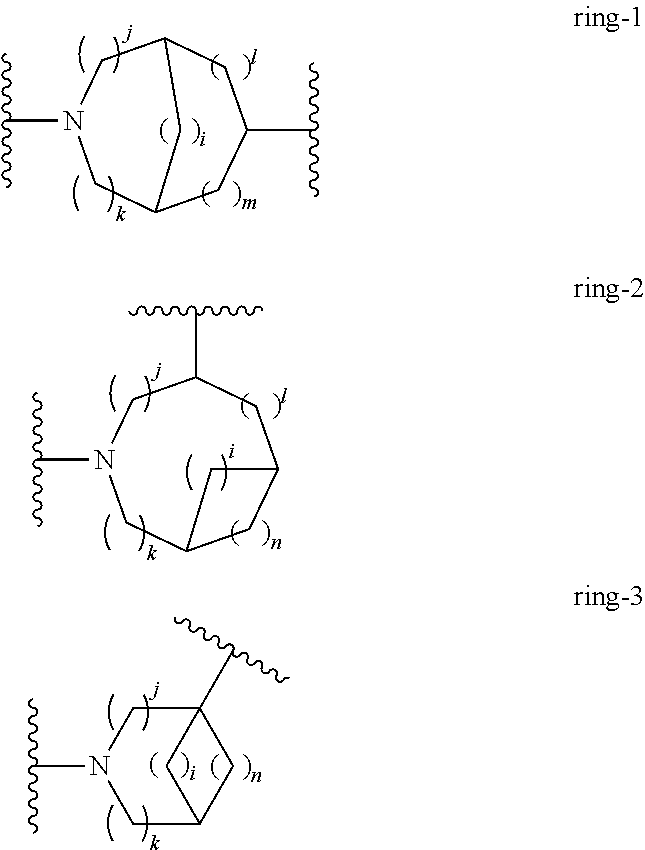There are currently no commercially approved therapeutic agents which act directly upon the
trabecular meshwork, the site of
aqueous humor drainage where increased resistance to
aqueous humor outflow is responsible for elevated IOP.
Despite their positive long-
term effect on prolonged
filtration, the application of cytotoxic drugs to a surgically opened eye increases the incidence of severe complications such as concomitant increases in vision threatening complications.
MMC exhibits a
high incidence of severe post-application complications, as does 5-FU; although its side effects mainly affect the
corneal epithelium its clinical use is limited by
severe pain and discomfort to the patient.
No sufficient method has been established to achieve satisfying postoperative long-term
surgical results with only minimal or no side effects for the patient.
AC impacts productivity and while there are a variety of agents available for the treatment of AC, numerous patients still lack
good control of symptoms and some are tolerating undesired side effects.
As a result of the hypofunction of corneal sensitivity, patients after a
corneal surgery blink less number of times, problematically showing the symptoms of dry eye.
Additionally, in the patients with dry eye, lacrimal hypofunction gives rise to corneal hyposensitivity, which, upon combination with further lacrimal hypofunction, problematically aggravates the sensory component of the
corneal surface.
Moreover, while corneal hyposensitivity is caused by the diseases accompanying corneal
neurodegeneration, such as neuroparalytic keratopathy,
corneal ulcer, diabetic keratopathy and the like, no appropriate treatment is available at present.
However,
artificial tears, the most widely used group of products, often have contraindications and incompatibility with soft contact lenses (Lemp M et al.
Although it rarely results in complete
blindness, it robs the individual of all but the outermost,
peripheral vision, leaving only dim images or black holes at the center of vision.
The wet form of the
disease usually leads to more serious vision loss.
The formation of
drusen can result in local inflammation as
extracellular debris forms around the RPE, photoreceptors, and other ocular structures.
At present, there is no proven
effective treatment for dry AMD other than the use of multivitamins and micronutrients.
This neovascular tissue is very fragile and hyperpermeable.
Frequently, it bleeds causing damage to the overlying
retina.
AMD is a challenging
disease for both patient and doctor, because there are very few
treatment options and, with the exception of anti-oxidants, no proven preventative therapy.
Current therapies, including
laser photocoagulation,
photodynamic therapy, and anti-angiogenic therapeutics have had mixed results, and, in certain instances, have caused deleterious side effects.
This differentiation results in
adhesive cells which contract in an unregulated, disorganized fashion and produce the tractional forces which detach the
retina.
Although such treatment often is successful, recurrent vitreoretinal traction may result in redetachment.
Blepharitis disturbs the production of the critical, outer lipid layer of the tear film which causes the entire tear to evaporate, resulting in dry eye.
A reduced tear quantity doesn't properly dilute
bacteria and irritants, nor wash inflammatory products away from the lashes and lid margin, so they accumulate and lead to further inflammation worsening the cycle of
disease, with
blepharitis,
meibomian gland dysfunction and dry eye perpetuating each other.
Since lid scrubs and hot compresses are required multiple times daily, long-term compliance to produce positive results can be an issue.
If left untreated, blepharitis can lead to a more serious condition called ulcerative blepharitis accompanied by
eyelid scarring, scarring of the
cornea, and eventually loss of
visual function.
The use of a topical ophthalmic
steroid can be helpful in reducing acute inflammation, however extended use is complicated by severe and numerous side effects.
These factors serve to further limit
airflow and are not directly addressed by current therapies.
Although corticosteroids are an
effective treatment for most cases of
asthma, the inflammatory cells and mediators in
COPD are not sensitive to treatment with systemic or inhaled corticosteroids making treatment with these agents of limited usefulness in
COPD.
RSV infection in adults also may cause short-term airway reactivity.
There is no
direct treatment for RSV infection and the respiratory complications it causes.
Bronchodilator therapy in infants with bronchiolitis, largely caused by RSV infection, did not demonstrate benefit in large randomized trials and systematic reviews.
Deficiency or dysfunction of the encoded proteins, hamartin or tuberin, respectively, results in a loss of regulation of signals from upstream sources including cell surface
tyrosine kinase and
G protein coupled receptors.
The constitutive activation of mTOR kinase and the downstream S6 kinase (S6K) leads to increased
protein translation, and ultimately to inappropriate cellular proliferation, migration, and invasion.
These events lead to cough and progressive shortness of breath.
IPF patients have compromised
lung function and have shown restrictive
lung volumes and capacities.
Thus, the first line of treatment of IPF has not yet been established.
Whereas a variety of different insults may lead to
ARDS, a common pathway probably results in the lung damage and / or failure, leukocyte activation within the lung, along with the release of
oxygen free radicals,
arachidonic acid metabolites, and inflammatory mediators, resulting in an increase in alveolocapillary
membrane permeability.
With the loss of this macromolecular barrier, alveoli are flooded with serum proteins, which impair the function of pulmonary surfactant (Said et al.
This creates hydrostatic forces that further exacerbate the condition (Jefferies et al., J. Appl. Physio. 64: 5620-5628, 1988), leading to alveolar edema and a concomitant deterioration in
gas exchange and lung compliance.
Unfortunately, positive-pressure mechanical support can create or contribute to
lung injury (ventilator-induced
lung injury, VILI).
Inflammatory reactions may lead to endothelial paracellular gaps and
extravasation of fluid and macromolecules.
Am J Respir Crit Care Med 168:918, 2003), leading to progressive respiratory insufficiency and eventual
respiratory failure.
Defective CFTR results in abnormal
ion transport and airway surface liquid volume with alterations in the
rheology of airway secretions, which become thick and difficult to clear (
Wine J J.
Once infection is established, neutrophils are unable to control the
bacteria, even though there is massive infiltration of these inflammatory cells into the
lung tissue.
This phenomenon may occur when progressive airway damage leads to a loss of cartilaginous support, resulting in an increased reliance on
muscle tone for maintenance of
airway patency.
Muscle relaxation in this setting can cause collapse of such “floppy” airways, leading to increased
airflow obstruction.
The result is permanent abnormal dilatation and destruction of the major bronchi and bronchiole walls.
Recurrent infection is common, which can lead to further scarring, obstruction, and
distortion of the airways, as well as temporary or permanent damage to the lung
parenchyma (Barker, A. F. Clinical manifestations and diagnosis of
bronchiectasis.
Mortality is difficult to estimate given the difficulty in identifying
prevalence and the lack of definitive studies.
Several antibiotic treatment strategies are expensive and require extra equipment and personnel and only target part of the
pathophysiology of the disease.
(Barker, A. F.) Thus, the treatments for bronchiectasis are limited in their ability to affect key pathophysiologies of the disease.
Low levels of AAT and / or
secretion of defective AAT can lead to an imbalance between antiproteases and their target
serine proteases, leading to
tissue damage by these potent degrading enzymes (Koehlein, T et al.
AAT is mainly produced in the hepatocytes, with the most common inherited AAT defect giving rise to an accumulation of
abnormal protein in these cells, often resulting in
cell damage (Lomas, D A, et al.
In the lung, the alveoli show low levels of functional AAT, often leading to an imbalance between antiprotease and
protease, and consequential tissue destruction.
However, as none of these therapies are particularly effective, there is an unmet medical need for improved drugs for the treatment of AATD induced lung disease.
Each type of allergic rhinitis may cause additional symptoms such as
itching of the
throat and / or eyes, excessive tearing, and edema around the eyes.
The treatments for rhinosinusitis are costly, exceeding $200 million per year.
This illness is detrimental to both the overall
quality of life and economic welfare of sufferers.
A leading theory suggests that
exposure to allergens induces inflammation in the small channels of the ostiomeatal complex (OMC), which results in mucosal edema and ultimately impaired mucociliary clearance of the sinus ostia leading to blockage.
The histopathologic features of OB suggest that injury and inflammation of epithelial cells and subepithelial structures of small airways lead to excessive fibroproliferation, seemingly due to ineffective epithelial regeneration and
aberrant tissue repair.
BOOP usually responds well to
corticosteroid treatment, however, frequent relapse occurs and new therapeutic options are needed to treat BOOP.
 Login to View More
Login to View More 


